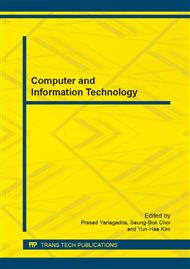p.1542
p.1546
p.1556
p.1560
p.1564
p.1568
p.1572
p.1576
p.1581
Components Replenishment Policy for ATO Producer Based on Consumer Choice Behavior
Abstract:
Under the assumption that product family manufacturer adopts assemble-to-order (ATO) to assemble common component and specific components into two kinds of product belonging to a same product family and being substitutive for each other, a product marketing and components replenishment model is developed. The optimal marketing and replenishment policy for product family ATO manufacturer is obtained. And an algorithm for the optimal policy is proposed. It is shown through theoretical, numerical and empirical analysis that product family ATO producer should make the prices of products no larger than their intrinsic value, and the difference between prices not too big or too small; with the rise of product intrinsic value, producer should raise the prices of whole product family, increase the time with components in stock and shorten the cycle of replenishment.
Info:
Periodical:
Pages:
1564-1567
Citation:
Online since:
February 2014
Price:
Сopyright:
© 2014 Trans Tech Publications Ltd. All Rights Reserved
Share:
Citation:


